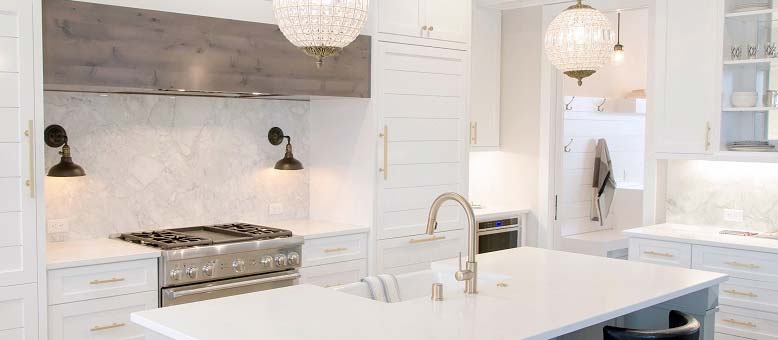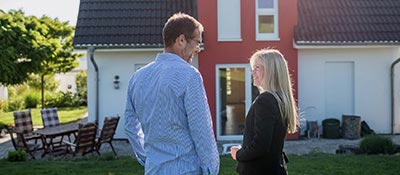Saving for a down payment on a house? Here's how to get there.
Buying a home is a huge commitment. Here's how to make it manageable, from initial planning to putting a down payment on a house.
Buying a home is equal parts terrifying and exciting, and for good reason. It's likely the most expensive purchase you'll ever make, so you should take it seriously. However, that fear stops being useful when it keeps you from going after the home you want.
In a recent survey, 86 percent of Canadian millennials said they hope to own a home someday, but 63 percent of them think buying property has become harder in the last year alone. What were their biggest challenges? Getting the funds — and the nerve — to make a down payment on a house.
But fear not! It's a big decision, and we're here to help. Here's how to build up your down payment, so you're ready when opportunity knocks.
How do down payments work?
The down payment is the first chunk of change you'll put toward a new home. The rest of the cost of the house will be covered by a mortgage loan that you'll chip away at over time, but the down payment is your way of telling lenders "Yes, I can afford this house, and I'll prove it by putting this money on the table right from the get-go."
How much your down payment will cost you depends on the price of the home. The government of Canada says that, for homes that cost less than $500,000, the minimum down payment is 5 percent of the purchase price. For homes between $500,000 and $999,999, you'll pay at least 5 percent of the first $500,000 of the purchase price, then 10 percent of however much of the cost is left. If you buy a house that costs $1 million or more, you'll pay a full 20 percent down. If mental math isn't your strong suit, don't worry. There are calculators that will do the work for you.
Keep in mind that no matter what the home you want to buy is listed at, if you have less than 20% for a down payment, you'll have to pay for mortgage insurance, which protects your lender in case you can't pay back your loan. That all adds up to more money out of your pocket, but if getting an insured mortgage is absolutely necessary, and you can manage the higher mortgage payments, you shouldn't let that stop you from buying your home.
On the flip side, paying more upfront could help you have less debt, setting you up to pay off your mortgage sooner rather than later.
Saving for a down payment
Now that you're familiar with the details, here are three key tips for how to save for a down payment on a house
1. Plan your timeline
Make a homebuying timeline, and set your goal (in this case, making a down payment) a year or two out. This all depends on what your current financial situation looks like, though. If you're imagining yourself in a million-dollar home but only have $500 saved, you're going to have to give yourself some time to build your down payment up. Start a savings account that's solely for your down payment, and arrange with your financial institution to have the money automatically moved from your chequing into your savings on the same day every month. If you don't see it, you won't spend it.
On the flip side, paying more upfront could help you have less debt, setting you up to pay off your mortgage sooner rather than later. "
2. Set your budget
Take what you think your down payment is going to look like and divide it by 12. That's how much you need to save each month to reach your goal in a year. If you're aiming to hit your down payment in two years, divide it by 24, or divide it by 36 for three years, and so on.
3. Know your government perks
The government can help you pay your down payment. Most provinces have their own ways of helping first-time homebuyers, but on the federal level, your best bet is the Home Buyers' Plan (HBP). The HBP lets first-time homebuyers borrow up to $35,000 from your Registered Retirement Savings Plan (RRSP) tax-free, then gives you 15 years to repay that money into your RRSP, starting in the second year after you buy your home. For example, if you buy a home in 2019, you won't need to begin repaying until 2021. If you've owned a home in the past but haven't purchased a home in the last four years, you may also be able to take advantage of the HBP.
As a bonus, after you've moved in, check out the First-Time Home Buyers' Tax Credit (HBTC). This tax credit gives first-time buyers a nonrefundable credit of up to $750 to recover expenses for legal fees, inspections, and other closing costs. And if you bought a newly built home, the GST/HST incurred can be rebated to qualified Canadians through the GST/HST New Housing Rebate. This means that you can recover some of the goods and services tax (GST) or the federal part of the harmonized sales tax (HST) that you paid for your primary residence. You can also check to see if your province offers any housing rebates for the provincial part of the HST or GST. These programs can help put some money back in your pocket, easing the pain of emptying your savings for your down payment.
Major expenses always seem intimidating when you're looking at them as a single number. Breaking it down into smaller pieces helps make that ultimate goal feel more achievable, and is the key to success. With one-part strategy and one-part patience, you'll be walking into your new home before you know it.


